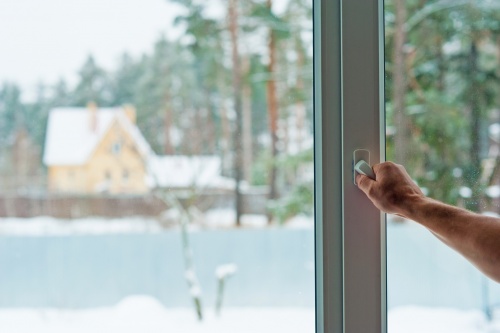Monitoring air quality
From eedomus - Documentation
The air quality of our indoor environment is fundamental for our health.
Monitoring the air quality is easy.
You can also automate the actions to improve the air (ventilation).
Contents |
Components to monitor
Temperature and humidity
Temperature and humidity are not pollutants, nevertheless, an ideal environment is near 50% of relative humidity (neither too wet nor too dry).
Some people are more sensitive than others to the cold (elderly), to the warmth (babies).
Work is more effective with an optimised temperature.
CO2, carbon dioxide
Carbon dioxide is not toxic.
However, a concentration superior to 1000 ppm (part by one million, that is 0,1 %) signals an excessive amount.
Beyond this level, human concentration and comfort decreases, particularly due to the decrease of oxygen.
CO, carbon monoxide
Contrary to the CO2, CO is very toxic, and a matter of risk in domestic safety.
It is produced by incomplete combustions (boilers, space heaters, heat engines). The threshold for the maintenance of boilers is 10 ppm.
Wikipedia CO
VOC, Volatile organic compound
The VOC are the main pollutants of indoor air .
They are more or less toxic. Methane is nearly harmless, and benzene is highly toxique.
The VOC is often measured by means of a global sensor, sensitive to several compounds.
Wikipedia VOC
PM, Particulate matter
They are classified according to their size, PM10 or PM2.5 (2,5 micrometers). The finest particles are the most dangerous for the health.
A concentration of 25 microgram per m3 is considered by the WHO a threshold not to be exceeded on the long run for PM2.5 (and the double in PM10).
Wikipedia PM
Sensors connected with eedomus
The sensors are indoor sensors. With certain precautions (in particular the humidity and the rain), they may be used in outside environment.
Foobot
 The Foobot measures CO2, global VOC (including CO) and fine particulates (PM2.5), besides the humidity and the temperature.
The Foobot measures CO2, global VOC (including CO) and fine particulates (PM2.5), besides the humidity and the temperature.
Netatmo Weather station
 The Netatmo Weather Station measures the CO2 rate, besides the humidity and the temperature.
The Netatmo Weather Station measures the CO2 rate, besides the humidity and the temperature.
Withings
 Some Withings Scales measures the CO2 rate, besides the humidity and floor temperature.
Some Withings Scales measures the CO2 rate, besides the humidity and floor temperature.
Vision CO
 The Vision CO sensor is a Z-Wave device detecting carbon monoxide.
The Vision CO sensor is a Z-Wave device detecting carbon monoxide.
What to do?
In case of abnormal mesure, eedomus can both notify the users and switch on the ventilation system (if connected).
Ventilation
The ventilation system generally dissipates excesses of CO2 or internal VOC.
If the VOC is due to the automobile traffic, it is necessary to ventilate by filtering.
Filtrering
If the fine particles are high, it is necessary to identify the cause (external or internal), and then filter or ventilate the air accordingly.
Evaculate!
In case of CO's detection, it is absolutely necessary to leave the premises (then ventilate and find the cause on the heating system).
You can program an alarm with eedomus (switching on the lights) in case of detection, just like the detection of smoke.
How to prevent pollution
While building, watch the quality of the materials and furnishing.
Both synthetic materials (plastics) and the natural materials (but assembled with glue) may generate VOCs.
Sources of pollution are numerous (children's toys, for example), it is necessary to think of aerating or of installing a ventilation system to ease the task.






